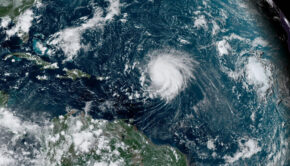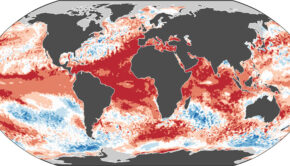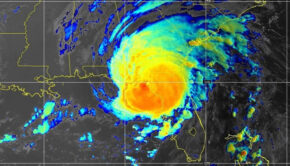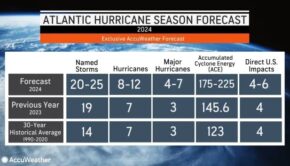2023 Atlantic Hurricane Season wraps up
Published on November 29th, 2023
As the Atlantic Hurricane Season comes to a close, National Oceanic & Atmospheric Administration (NOAA) issues this report:
This season was very active in terms of the number of named storms. The Atlantic basin saw 20 named storms in 2023, which ranks fourth for the most named storms in a season since 1950. Seven of these were hurricanes and three intensified to major hurricanes (Category 3 or higher on the Saffir-Simpson Hurricane Wind Scale).
An average season has 14 named storms, seven hurricanes and three major hurricanes. Although the season runs from June 1 to November 30, tropical and subtropical cyclone formation can occur at any time.
“A strong El Nino and record warm water in the tropical Atlantic were competing factors and the main drivers of hurricane activity this season,” said Matthew Rosencrans, lead hurricane forecaster at NOAA’s Climate Prediction Center—a division of the National Weather Service. “Based on the high number of named storms this year, I’d say the warm ocean temperatures won out.”
Hurricane Idalia, which formed in the northwestern Caribbean, intensified into a Category 4 hurricane before making landfall as a category-3 hurricane on August 30 near Keaton Beach, FL. Idalia was the only U.S. landfalling hurricane in 2023, and caused storm surge inundation of 7 to 12 feet and widespread rainfall flooding in Florida and throughout the southeast.
Tropical Storm Ophelia made landfall September 23, as a strong tropical storm with 70 mph winds on Emerald Island, NC, causing widespread heavy rainfall, gusty winds and significant river and storm surge flooding in portions of eastern North Carolina.
Hurricane Lee made landfall as a post-tropical cyclone in Nova Scotia, Canada, on September 16. Swells generated by Lee caused dangerous surf and rip currents along the entire U.S. Atlantic coast. Strong winds with hurricane‑force gusts from Lee caused extensive power outages in Maine and in parts of Canada.
The 2023 Atlantic seasonal activity fell within the NOAA Climate Prediction Center’s predicted ranges for named storms and hurricanes in the August updated outlook.
“The Atlantic basin produced the most named storms of any El Nino influenced year in the modern record,” said Rosencrans. “The record warm ocean temperatures in the Atlantic provided a strong counterbalance to the traditional El Nino impacts.”
NOAA’s new Hurricane Analysis and Forecast System helped National Hurricane Center forecasters improve intensity predictions this season. NOAA’s intensity forecasts showed Hurricane Idalia as a major hurricane impacting the coast of Florida from early on August 28 through landfall two days later.
This lead time gave those in threatened areas more time to prepare and respond, and there were no storm surge fatalities from Idalia despite storm surge inundation of as much as 12 feet above ground level in some areas.
Further, extending the National Hurricane Center’s tropical weather outlook product from five to seven days this season provided emergency managers more time to prepare and stage resources before a storm.
NOAA’s advanced geostationary and polar-orbiting weather satellites provided observations to improve the 3-5 day forecast and for situational awareness throughout the hurricane season. The GOES East geostationary satellite, also known as GOES-16, keeps watch over most of North America, including the contiguous United States and Mexico, as well as Central and South America, the Caribbean, and the Atlantic Ocean to the west coast of Africa.
The satellite’s high-resolution imagery provides optimal viewing of severe weather events, including thunderstorms, tropical storms, and hurricanes. The Advanced Technology Microwave Sounder (ATMS) instrument on the Joint Polar Satellite System’s NOAA-21, NOAA-20, and Suomi NPP polar-orbiting satellites provides a view inside and below clouds and can be used to produce images inside storms, including hurricanes.
While the 2023 season is drawing to a close, now is not the time to let your guard down. The 2024 hurricane season will officially begin on June 1. Take the time to ensure your family is Weather-Ready for the season ahead. NOAA’s Climate Prediction Center, a division of the National Weather Service, will issue its initial 2024 seasonal outlook in May.








 We’ll keep your information safe.
We’ll keep your information safe.